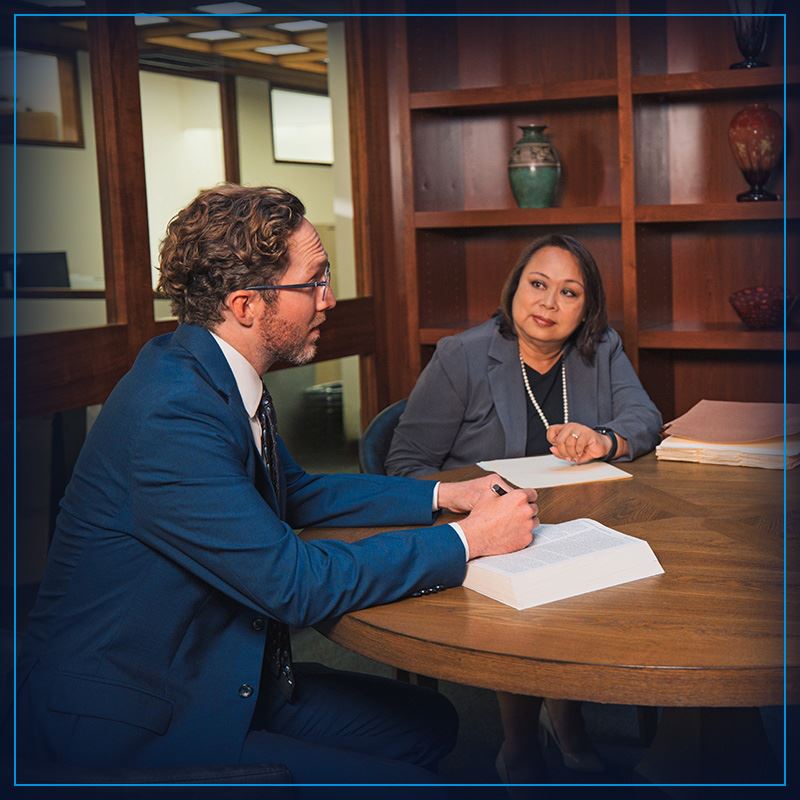
Honolulu Product Liability Attorneys
Representing Clients Who Have Been Injured by Defective Products in Hawaii
Personal injuries can come from many sources. One source is from a defective product. When a product is defective, several people involved in the chain of manufacturing, distributing, and selling the product can be liable to a person injured by the product in a product liability case.
A product liability claim occurs when a defective product causes injury to someone. A product is considered defective if it poses an unreasonable risk of harm to its user, or even in some circumstances, to bystanders. The defect can be in the design or manufacture of the product. Different facts must be proven depending on the type of defect.
At Davis Levin Livingston, our Honolulu product liability lawyers have extensive experience handling a wide range of complex claims. We can help you understand your rights and options, and we will work diligently to hold the negligent company accountable for your damages.
Call our office today at (808) 740-0633 or contact us online to schedule a free consultation with one of our product liability attorneys.
Types of Product Liability Claims We Handle
When a company designs, manufactures or sells a product, it has a legal duty to ensure that the product is safe for consumers to use. When a product is unreasonably dangerous or defective, it can cause serious and catastrophic injuries. In some cases, defective or dangerous products can even cause death.
At Davis Levin Livingston, we have a proven track record of success in handling a wide range of complex product liability claims. Our attorneys have the skills, experience, and resources to go up against even the largest corporations. We can help you seek the full, fair recovery you are owed.
We handle all types of product liability claims, including those involving:
- Defective Auto Parts: This category includes faulty components in vehicles such as brakes, airbags, tires, steering mechanisms, and electrical systems. Defects in auto parts can lead to accidents, injuries, or fatalities.
- Defective Medical Devices: Medical devices encompass a broad range of products used for diagnosis, treatment, or monitoring of patients. Defects in medical devices can result in serious harm or even death to patients. Examples include faulty pacemakers, hip implants, surgical instruments, and infusion pumps.
- Defective Household Products: These are products commonly found in homes that can pose risks if defective. Examples include defective appliances (e.g., stoves, refrigerators), defective electrical equipment (e.g., faulty wiring), defective furniture (e.g., unstable chairs or tables), and defective power tools.
- Defective Children's Products: Products designed for children must meet stringent safety standards. Defects in children's products can lead to injuries or fatalities. Examples include defective toys (e.g., choking hazards, toxic materials), defective car seats, cribs with faulty latches or rails, and defective child safety gates.
- Defective Electronics and Gadgets: With the rise of technology, defects in electronic devices and gadgets are also common. This includes defective smartphones, tablets, laptops, and other consumer electronics. Defects can range from battery issues (e.g., explosions, overheating) to software glitches that compromise functionality or security.
- Defective Pharmaceuticals: Defects in pharmaceutical products can have severe consequences for patients. This includes issues such as contamination, incorrect dosage, ineffective formulations, or undisclosed side effects. Defective pharmaceuticals can lead to adverse reactions, worsened health conditions, or even death.
- Defective Food and Beverages: While less common, defects in food and beverages can occur, leading to foodborne illnesses or allergic reactions. Examples include contaminated food products, mislabeled allergens, or foreign objects in packaged goods.
- Defective Construction Materials: Defects in construction materials can compromise the structural integrity of buildings, bridges, roads, and other infrastructure. This includes issues such as faulty concrete, substandard steel, or defective insulation, which can lead to accidents, collapses, or environmental hazards.
Products liability claims are time sensitive. The deadline to file most products liability claims is two years from the date of the injury. There are some exceptions to the rule. In some cases, the clock does not start ticking until there has been exposure to the product, injury from the product and reason to know of the connection between the exposure and the injury.
How Can a Product Be Defective?
Three main types of defects can give rise to product liability claims: design defects, manufacturing defects, and marketing defects. In some cases, multiple parties can be held liable for a defective product, including the product designer, the product manufacturer, the product distributor, and even the product retailer.
- Design Defects: A design defect is a defect that is inherent to the product’s design. This means that every product that is designed in this way will be defective and dangerous. A design defect can occur when the product is initially designed or when the product is being redesigned.
- Manufacturing Defects: A manufacturing defect is a defect that occurs during the manufacturing process. This means that the product is designed to be safe, but a defect occurs while the product is being manufactured. A manufacturing defect may affect one product, or it may affect an entire batch of products.
- Marketing Defects: A marketing defect is a defect that occurs during the marketing process. This means that the product is safe and defect-free, but the manufacturer, distributor, or retailer fails to provide adequate warnings about the product’s dangers. A marketing defect can also occur when the product is marketed in a misleading way.
Defective Products Liability and Consumer Rights
When you purchase an item from the store, you are considered a consumer of that particular item. Although consumer protection laws and consumer rights may seem complicated, they are designed to help you when unexpected situations arise. After purchasing a product, you may discover that it is not working as advertised. In some cases, you or a member of your family may be injured due to the defect. Whether you are injured or not, you have rights that are designed to protect your interests as a consumer.
The discovery of a defect in a product does not necessarily mean that you or a family member will be injured from that problem. A defect describes any problem with the product that was not caused by your actions, such as a shirt that is missing a button or a toy that does not work as advertised.
If you are not injured by the defect, then you may have options that can help. Depending on the item that you purchased, you may be able to ask for a repair or you may return the product.
Depending on the situation, repairs may be handled by the manufacturer or the store where you purchased the item. A warranty on the product can help determine if the manufacturer will fix the defect or if it is the responsibility of the store.
The ability to return a product may depend on different factors. You may be able to return items to the store if it is still within the store’s return policy. Every store has a different policy and certain objects may have a shorter time limit, such as video games or electronics.
Why Choose Davis Levin Livingston?
At Davis Levin Livingston, we are committed to helping the injured and the wronged. Our attorneys have extensive experience handling a wide range of complex product liability claims. We have a proven track record of success, and we have recovered millions of dollars for our clients.
When you choose to work with our firm, you can rely on us to:
- Thoroughly investigate your case: We will review the product, the product’s design and manufacturing history, and the company’s marketing materials. We will also work with a team of experts to determine the cause of the defect and to calculate your damages.
- Identify all potentially liable parties: We will determine who is responsible for your injuries and damages, and we will identify all potentially liable parties. This may include the product designer, the product manufacturer, the product distributor, and even the product retailer.
- Negotiate with the insurance company: We will handle all negotiations with the insurance company, and we will work diligently to secure a favorable settlement on your behalf. We will not hesitate to take your case to trial if the insurance company refuses to make a fair offer.
Our Honolulu product liability lawyers have experience handling a variety of complex claims, including those involving defective auto parts, defective medical devices, defective drugs, defective children’s products, defective household products, defective tools and machinery, and defective construction products. We can help you understand your rights and options, and we will work diligently to hold the negligent company accountable for your damages.
Call our office today at (808) 740-0633 or contact us online to schedule a free consultation with one of our product liability lawyers.


Four Decades of Record Breaking Victories
-
$104,000,000 Child Sex Abuse
We're proud to have secured a landmark $104 million settlement for victims of abuse against Kamehameha School. This ground-breaking case marks a significant victory for the victims, with the school agreeing to settle.
-
$29,400,000 Medical Malpractice
Physicians at Tripler Army Medical Center failed to order a crucial test that would have detected a twisted gut in a 1-month-old baby, resulting in the loss of 95% of the baby's small intestine and leading to lifelong disability.
-
$15,400,000 Wrongful Death
The state has agreed to a $15.4 million settlement in a civil lawsuit filed by the families of two hikers who fell to their deaths on a Kauai hiking trail in 2006.
-
$15,000,000 Vacuum/Forceps Injury
The hospital improperly attempted to deliver a post-date baby using a traumatic second-stage vacuum extraction. This extraction and the delay in delivery resulted in permanent brain damage to the baby.
-
$9,975,000 Brain Injury
The hospital's failure to monitor an infant's rising bilirubin levels led to bilirubin encephalopathy and kernicterus, resulting in severe and permanent brain damage. A settlement of $9,975,000 was obtained.
-
$9,500,000 Medical Malpractice
Surgeons at Tripler Army Medical Center reattached the small intestine backward during gastric bypass surgery, leading to complications that ultimately resulted in the death of a 31-year-old Army wife and mother of three.

Why Davis Levin Livingston?
-
Available by phone 24/7 & ready to help.
-
Secured tens of millions of dollars on behalf of our clients.
-
Highest malpractice judgment in U.S. history against a military hospital.
-
Includes an experienced medical team including a nursing staff to answer your questions.
-
Mark Davis and Mike Livingston have been recognized as some of the best lawyers in Hawaii.
-
Resources available to advance your expenses; no cost or fees unless Davis Levin Livingston wins your case.

Dedicated Legal Counsel You Can Count On
Helping Families throughout hawaii for over 40 years
-
"Professional, KIND, and understanding"
They are most professional, KIND, and understanding. Thank you Matt Winter for all your help.- Clare T. -
"We wouldn't have chosen any other team!"
Mathew Winter and the whole staff of Davis Levin Livingston guided us every step of the way and made sure we understood everything that was going on. They were always so welcoming and compassionate. Communication was never a problem and emails were answered super fast, especially when we had so many questions. They- Maariel -
"The absolute best firm in Hawaii. Compassion and professionalism at its best!"
Truly a wonderful experience with everyone at the firm. I can't thank you enough for helping provide closure for my family and me during this process. The absolute best firm in Hawaii. Compassion and professionalism at its best!- Daniel -
"After doing extensive research I knew that Davis Levin Livingston was the firm for me due to the success they have had in cases like mine."
After doing extensive research I knew that Davis Levin Livingston was the firm for me due to the success they have had in cases like mine. What surprised me was their personal touch. In the 3- Anthony






.1).1).2401101010550.png)





.1910211111556.png)

.1).1910211114162.png)
.1910211111550.png)